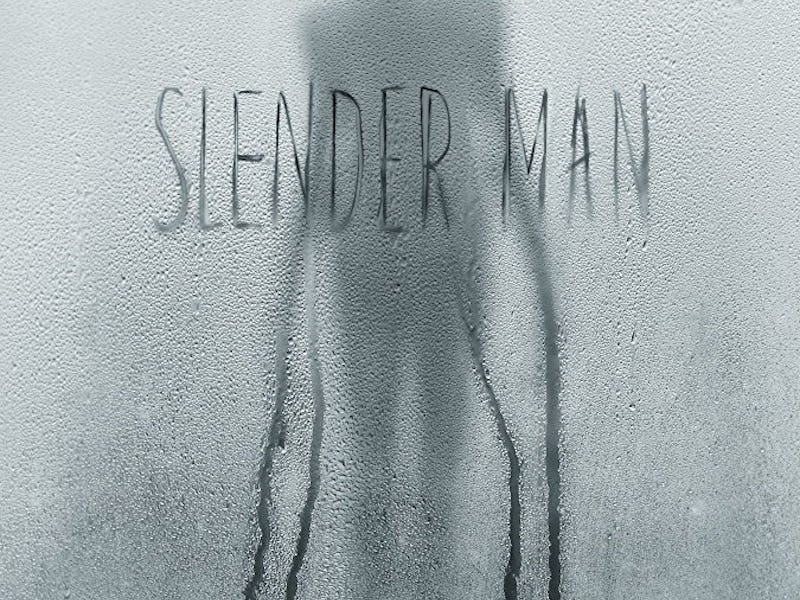''Slender Man'' Is a Modern Take on American Folklore With an Awkward PSA
It's good. But it would've been even better if it didn't reference tragedy.

Creepypasta may have been born on the internet but it still borrows heavily from previous storytelling traditions. [Slender Man, the new movie based on one of the web’s most well-known scary stories, is a clever modernization of the classic American horror tale. However, an awkward conclusion addressing the film’s controversial production hampered what could have been a landmark movie for creepypasta fans.
The movie owes its inspiration to Eric Knudsen (pseudonym Victor Surge)), who invented the Slender Man character in 2009 for a Photoshop contest. Slender Man has since gone on to inspire a collaborative mythos of illustrations, short stories, and even video games. Since there’s no principal author behind Slender Man anymore, his character is constantly being built and redefined by hundreds of creators. This makes him a prime example of digital folklore, a facet of the character which is heavily referenced in the movie.Since there’s no principal author behind Slender Man anymore, his character is constantly being built and redefined by hundreds of creators. This makes him a prime example of digital folklore, a facet of the character which is referenced in the film’s opening scenes.
Smartphones, devices which we have come to rely on for virtually everything from communication to navigation, actually become liabilities in the film. In one scene, Slender Man accesses a victim’s phone and broadcasts a livestream from his point of view, phasing through the door of her house and climbing up the stairs (or so they say).
Despite these fantastical elements, Slender Man might be a little too genuine for its own good. The movie is clearly inspired by several real-life cases of arson and attempted murder been made in the character’s name. The most notable example occurred on May 2014, when Anissa Weier and Morgan Geyser (both 12-years-old at the time) lured a friend into the woods and stabbed her 19 times in a deluded attempt to summon Slender Man.
There’s also something perversely thrilling about watching our heroes lose themselves as the Slender Man’s hauntings intensify, especially Joey King’s Wren. As the first to suggest summoning Slender Man, we think she’s the cool and broadcastlf-assured at first, but in a horrifying bit of subversion, she eventually descends into wide-eyed, delirious madness.
Earlier this year, director Sylvain White was harshly criticizied by Bill Weier, father of Anissa Weier, who accused the film of “popularizing a tragedy” and called it “extremely distasteful”.
However, this creepypasta PSA falls flat when it’s being told in a movie that is drawing attention to the very meme it’s supposedly warning against. It feels like a pre-emptive mea culpa for the filmmakers to save face without having to confront the very real possibility that this movie is indeed exploiting the tragic incidents Slender Man mythos inspired.
By staying as true as possible to its source material, Slender Man ironically went against the spirit of its own folklore. The power of Slender Man has always been in the character’s open-ended nature. This film was a prime opportunity to explore aspects of the character that have been largely unanswered. Was Slender Man a human being at some point? When was he first sighted? Does he have any sort of weaknesses that can be exploited?
There are many original directions that Slender Man could have gone that could have resulted in a better film. It’s unfortunate that the filmmakers decided to rely on what has already been written on the character, including the meme’s dark history, rather than adding to the legend of Slender Man with a new perspective that doesn’t involve opening the wounds of grieving families.
Slender Man hits theaters on August 10.